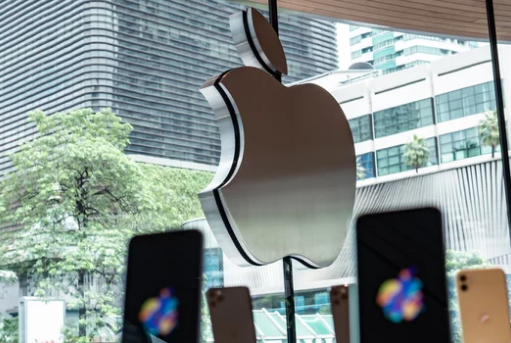In today’s connected world, data sharing is one of the most essential smartphone functions. Whether you’re sending vacation photos to friends, sharing work documents, or transferring data to a new device, the ease (or difficulty) of sharing files can make a big difference in your overall smartphone experience.
Apple’s iPhone and Samsung’s Galaxy series dominate the global smartphone market. Both come packed with unique features for file sharing, yet they approach the process in very different ways. If you’ve ever wondered which brand makes data sharing smoother, faster, and more versatile, this article will help you weigh the pros and cons of data sharing on iPhone vs Samsung.
iPhone Data Sharing: The Apple Approach
Apple is known for its ecosystem-first design, meaning everything works seamlessly within the Apple universe. For iPhone users, this has major advantages—but also some limitations when it comes to sharing with non-Apple devices.
Pros of iPhone Data Sharing
- AirDrop for Instant Sharing
- Apple’s AirDrop is one of the most seamless sharing features in the industry. With just a tap, you can send photos, videos, contacts, or documents to nearby Apple devices using Wi-Fi and Bluetooth.
- No need for cables, apps, or internet connection.
- iCloud Integration
- iCloud allows iPhone users to sync and share files across all Apple devices, including MacBooks and iPads.
- File sharing through iCloud Drive also works across platforms (via browser).
- Secure Sharing
- Apple prioritizes end-to-end encryption, making AirDrop and iCloud transfers safe.
- Privacy settings let users control who can send files to them.
- Ease of Use
- File sharing options are well-integrated into iOS. Sharing menus are consistent and user-friendly.
Cons of iPhone Data Sharing
- Limited to Apple Ecosystem
- AirDrop only works between Apple devices. If your friends or colleagues use Samsung, AirDrop is useless.
- File Format Challenges
- iPhone saves images in HEIC and videos in MOV, which aren’t always compatible with Android or Windows devices.
- Storage Limitations in iCloud
- Free iCloud accounts come with just 5GB of storage—often not enough for heavy users.
- Less Customization
- Unlike Android, iPhone users have fewer choices when it comes to third-party file-sharing apps.
Samsung Data Sharing: The Android Advantage
Samsung phones run on Android, offering more flexibility and compatibility with third-party services. Samsung also includes its own advanced features for fast and easy sharing.
Pros of Samsung Data Sharing
- Quick Share (Samsung’s AirDrop Alternative)
- Samsung’s Quick Share allows Galaxy users to send files instantly between Samsung devices using Wi-Fi Direct.
- Similar speed and convenience to AirDrop, but with wider compatibility across some Android models.
- Flexibility with File Formats
- Samsung devices save photos in JPEG and videos in MP4, which are more universally compatible with other platforms.
- Multiple Sharing Options
- Supports Nearby Share (Google’s Android-wide sharing feature).
- Works seamlessly with Google Drive, OneDrive, and Samsung Cloud.
- Expandable Storage and File Management
- Some Samsung devices support microSD cards, making offline data sharing easier.
- File manager apps offer more control over how files are organized and shared.
Cons of Samsung Data Sharing
- Not as Seamless as AirDrop
- While Quick Share is powerful, it’s not as universally adopted as AirDrop.
- Sharing between Samsung and iPhone often requires third-party apps or cloud services.
- Security Concerns
- While Samsung and Google offer good security, third-party apps for sharing may expose users to privacy risks if not carefully managed.
- Inconsistent User Experience
- Android allows for customization, but this sometimes means different devices or software versions behave differently when sharing files.
- Dependency on Internet for Some Methods
- Cloud-based sharing (Google Drive, OneDrive, etc.) requires a strong internet connection.
iPhone vs Samsung: Side-by-Side Comparison
| Feature | iPhone (iOS) | Samsung (Android) |
|---|---|---|
| Instant Sharing Tool | AirDrop (fast, seamless, but Apple-only) | Quick Share (fast, works with Galaxy devices) |
| Cross-Platform Sharing | Limited; needs apps or iCloud via browser | Better; supports Google Drive, Nearby Share |
| File Formats | HEIC, MOV (less compatible) | JPEG, MP4 (more universal) |
| Cloud Storage | iCloud (5GB free) | Google Drive (15GB free), OneDrive, Samsung Cloud |
| Ease of Use | Extremely user-friendly, but limited options | More flexible, but less standardized |
| Security | Strong encryption, privacy-first | Strong, but varies with apps and settings |
Which Is Better for Data Sharing?
- Choose iPhone if: You live in the Apple ecosystem and mostly share files with other Apple users. AirDrop makes file sharing incredibly easy and secure, but cross-platform sharing will feel limited.
- Choose Samsung if: You value flexibility, often share files with non-Samsung devices, or rely on cloud storage like Google Drive. Samsung’s broader compatibility makes it more versatile for mixed-device environments.
Final Thoughts
Both iPhone and Samsung devices offer powerful data sharing features, but they cater to different needs. iPhones excel in simplicity and security, thanks to AirDrop and iCloud—but they struggle when sharing outside the Apple ecosystem. Samsung, on the other hand, provides more flexibility and compatibility, though its tools aren’t always as seamless.
If you’re deciding between the two, think about your circle: Do most of your friends, family, or colleagues use iPhones? If so, Apple’s ecosystem will make your life easier. But if you often share with people across platforms, Samsung’s Android approach will give you more freedom.
Also Read :
